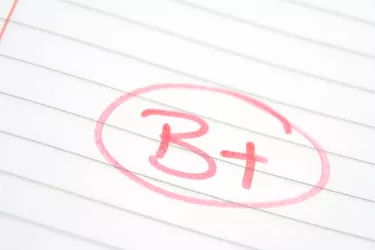
Many teachers participate in a pension-style retirement benefit for their service. For every year they work, they secure a certain amount of money, which will be paid to them each month in their retirement. By understanding some basics about your pension plan and performing some simple calculations, you can determine what your pension will be during your golden years.
Step 1
Determine what makes you vested in the retirement plan. Most retirement plans require a person to become vested before he will receive any payout during retirement. Check to see what your plan requires. Often five years of service is the minimum before a teacher is vested into a plan. From that point forward, every additional year you work, you will gain more money toward your monthly retirement.
Video of the Day
Step 2
Plan the total years of teaching service you will have achieved before retirement. While many teachers provide 30-plus years of service, some bank more and some bank less. It is important to calculate how many years you will have worked when you retire, as that will be used to determine your pension benefit.
Step 3
Learn what qualifies as "early retirement." Many teacher pension plans set a retirement age at 65. But those same pension plans may allow teachers to take an early retirement at 50 or even 55. The amount of money that you will receive will be reduced compared to what you would have gotten if you had waited until age 65. This amount of money is usually calculated in percentage form. For instance, you will get 100 percent of your retirement benefit at age 65, but 3 percent less per year you retire early after age 50. So using this example, if someone retired at 55, she would get 70 percent of her full benefit.
Step 4
Determine your final teaching salary in the school system. Many schools take the salary of your last three years, find an average and use that as the final salary. This guards against things such as budget cuts, which might suddenly reduce your salary in the final year.
Step 5
Multiply the number of years you taught by the percentage per year that the pension plan offers. (This will include years before you were vested as well.) For instance, many teacher pension plans will state that a teacher receives 2 percent of his final salary per year that he taught. So, as an example, say someone taught for 30 years. He would receive 60 percent of his final salary.
Step 6
Multiply the pension percentage by the final salary. For example, say someone retired at age 65 with 30 years of service at 2 percent per year, with a final salary of $75,000. The equation would be:
2 percent x 30 years x $75,000 = Pension Benefit
0.60 x $75,000 = $45,000 per year
Remember to make adjustments if you are taking an early retirement.
Video of the Day